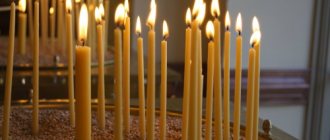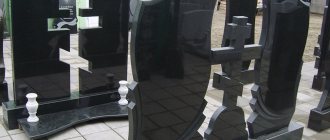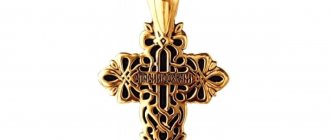When visiting a cemetery on Memorial Day, you can observe the flickering lights of lamps lit next to the graves. A lamp for a cemetery is a ritual attribute, honoring the memory of the deceased. It evokes special feelings and makes you think about the frailty of the world. Relatives place lamps at the burial site and make sure that the weak, flickering light illuminates the grave for as long as possible.
Meaning
Lamp from the Greek "lampas" means a portable lamp or a small vessel that contains oil and a wick inside. It is lit in front of the images and the fire does not go out until all the oil is burned.
Initially, the vessels were used simply as lamps, because there was no electricity, and the oil burned out much more slowly than a torch burned out. Such a lamp was used by Christians of the first centuries, since their meetings took place in caves, where it was always dark (persecution did not allow them to gather openly).
As soon as Emperor Constantine allowed Christian services, believers began to hold meetings in churches and the lamp became part of the decorations and attributes of the service. Today it is also used for Christian services in churches.
Interesting! The icon lamp is used by the priest during the liturgy (small and great entrances), as well as during the service of the bishop. The lamp is set on fire by the altar servers or taken to the priest by the deacons.
If initially the vessel was used in worship for its intended purpose - to illuminate a meeting in caves, today it has a more symbolic purpose - it metaphorically depicts the eternal fire of God's love and faith, which drives away the forces of darkness. Twilight in Orthodox churches symbolizes the darkness of human life, and fire is God’s compass, leading people to salvation.
Why are lamps placed in front of the icon?
Since the lamp is a symbol of the eternal flame of God’s love, it must burn constantly in the temple. At home they light it during prayers or for the entire time, provided that there is someone at home. Why this is necessary was explained very well by St. Nicholas of Serbia. He said that faith is light, and the fire in the vessel is a reminder of this light to man.
In addition, the saint identified several more reasons for the need for fire in front of images:
By lighting a lamp in front of the icons, a person illuminates the faces of the saints, focusing on them and expressing respect. Looking at its fire, people remember God, have a compass and a guide in this dark world.
When should you light a lamp at home?
They are lit during the reading of prayers, on temple holidays and simply at will. In churches they burn continuously, but change depending on the color, which corresponds to the events of the Orthodox calendar:
The tank is initially fixed in front of the image; if it is suspended, then a pin is first driven into the wall that will support the weight of the lamp. Before the prayer begins, the wick of the lamp is lit from a burning church candle and left to burn while the reading takes place.
In addition to prayer moments, the lamp is lit in front of the images on the days of remembrance of the saints who are depicted on the icons, on Sundays and holidays. While lighting the wick, you can read a special prayer:
Light, O Lord, the extinguished lamp of my soul with the light of virtue and enlighten me, Your creation, the Creator and Benefactor. For You are the immaterial Light of the world, accept this material offering: light and fire, and reward me with inner light to the mind and fire to the heart. Amen.
Today you can find lamps of completely different shapes, sizes, types and materials. Its components remain unchanged: an oil reservoir, a stand and a glass to protect the flame. If the lamp is pendant, then most likely it does not have a stand - it is replaced by a decorative element, and there must be three metal cords that hold the tank.
Types of vessels vary depending on the dimensions and methods of their use:
You can buy lamps of different shapes and types for home use, but the most convenient are glass table lamps, but you will definitely need to purchase a stand for them (it protects against ignition if the glass cracks). In this case, lamps can be simple or decorated with carvings and paintings.
Features of special candlesticks on graves
A grave lamp may look most unusual and intricate, but there are criteria that it must meet:
- The appearance must fit into the design of the grave.
- The product must be protected from rain and wind. For this purpose it is equipped with special devices. If this is a family crypt, then there is no need for protection.
- The lamp must meet fire safety requirements: a stable base, protection from open flames and burns.
Typically, the design involves a wax or paraffin-filled liner with a wick. The top of the lamp is covered with a tin lid with slits. It protects from rain and also provides oxygen through the slots.
The candlestick also regulates the intensity of the lamp's fire. It ensures long burning and prevents the fire from going out or getting too hot. Its standard shape is a cylinder or hexagon, on which is placed a dome-shaped lid with a cross.
Lights at the cemetery on Memorial Day
A candlestick is the same lamp that is designed to be placed near a grave. Beautiful glass candlesticks are inexpensive, they are easily transported from place to place, and refilled with oils. But this option has quite a lot of disadvantages:
- instability;
- increased fire hazard;
- short burning;
- one-time use.
A stone lamp for a grave is practical. It is beautifully decorated and lasts a long time. Installation and subsequent maintenance are carried out at the installation site. But such a “funeral lantern” is valued for:
- reliability in operation;
- sustainability;
- good quality;
- unusual design.
A candlestick in a cemetery can be connected to the eternal flame system: gas can be supplied to the lamp. It is quite difficult to create such an option, so it is used extremely rarely.
How to make a lamp
You can also create a simple tank for home use using improvised materials. For this you will need:
To make a wick, you need to wrap the wire tightly around the center of the rod so that the resulting spiral is in the center. The ends of the wire can be rolled into a circle and placed at the bottom of the jar, or you can use an awl to make 2 holes along the top edge of the container and thread the ends into them, securing them from the outside.
This way, you will get a holder for the wick, which should not protrude from the container by more than 0.5 cm. From the medical bandage, cut a strip as long as the lamp holder and cut it lengthwise.
Tie the resulting pieces at one edge, twist them together along their entire length and thread them through the holder so that the knot is on top. It should be cut so that the wick protrudes 1 cm upward. Then pour oil into the lamp and light it.
Oil
Initially, ordinary olive oil was used for lamps, which was widely consumed. In order for a lamp to burn, there is no fundamental difference in what kind of oil is poured into it, but it is not just a lamp, but also a symbol. Therefore, it is recommended to use oil that:
It is best to purchase special oil from a church store, usually pure Vaseline or mixed with olive oil.
How to light up correctly
You cannot light a lamp with a simple match or lighter - this is prohibited. You must use either a burning church candle or a long stick specially designed for this purpose. Lighting the lamp is quite simple:
The fire should not smoke or burn too brightly—a match-head-sized flame is sufficient.
Why does the lamp go out?
If the fire goes out all the time, then you need to check the room for drafts and use tanks that have a tall glass cup that protects the fire from the wind. In addition, the lamp may go out for other reasons:
In order for the wick to burn correctly and not go out, and also for the sake of fire safety, it is not recommended to leave the lamp unattended for a long time.
Why does the lamp smoke?
The main reason for soot or constant fading of the wick is poor quality material. To avoid problems, you should use a wick that meets all recommendations:
When using a lamp at home, the main thing to remember is that the house is a place of residence and it is unreasonable to turn it into a temple, forcing icons and lamps. In addition, do not forget about fire safety and do not leave an open fire unattended or in a room with children.
Source
A church lamp is considered one of the main symbols of a person’s unquenchable faith in God.
In ancient times, Christians illuminated dark caves with it, where local residents gathered to perform Divine services. There they hid from possible attacks from enemies and pursuers.
Later, lamps began to be used as decoration for churches and temples, as well as for various church sacraments.
In simple words, a lamp is a modified candle, the flame of which does not go out for a long time. Depending on the dimensions, methods of use and application, there are several types of lamps:
The main components of the lamp are a paraffin reservoir, a stand of any shape, and a colored crystal glass on it. Red is used for Easter, blue or colorless is used during Lent, green is used daily.
Design of the lamp and the materials from which it is made
The simplest lamp can be bought even in hardware stores like those where everything is sold at the same price: glass bulbs of different colors will cost about a hundred rubles each. But this is a very budget option, fragile and unreliable: it is suitable if the lamp is needed urgently, for example, tomorrow the funeral of a loved one will take place, and now there is nowhere and no time to buy an ordinary lamp.
When you finally have the opportunity to calmly choose a lamp, choose a stone product with glass elements. The stone can be different: the market here usually offers the same assortment that is observed for monuments - gabbro, marble, colored granites (Kapustinsky, Mansurovsky, Dymovsky and others).
- Stone lamps themselves are more durable. They, of course, have elements made of durable glass, but they are always reliably protected by stone frames - even if such a lamp falls on its side, the glass will not be damaged.
- A stone lamp can be secured really securely. In principle, a glass cone can also be placed on stone glue, but next season it will most likely crack due to temperature changes, and the bottom with fragments will be very difficult to remove.
Stone lamps are made in the shape of a cylinder or hexagonal prism, and they are usually crowned with a cross - just like on the dome of a temple. The upper surface of the prism can also have the shape of a dome.
However, we can make a lamp according to an individual sketch in any shape you need.
The meaning of a church lamp
The smoldering lamp symbolizes the outlines of Divine light emanating from heaven. The luminous attributes of temples were never used for their intended purpose. They personify spirituality and make a believer think about the most intimate things.
Thinking begins about what has been done in this life and how much remains to be done, about the meaning of existence and the afterlife. At such moments, enlightenment comes, and all bad deeds are revealed, for which you must repent.
A lamp burning in front of the image of a saint means sincere gratitude to him for the forgiveness and salvation of the soul.
Cemetery lights mean a kind of prayer for forgiveness of the sins of the deceased. In a home setting, a lamp indicates observance of the rules of God's law.
It is worth noting:
You cannot approach the lamp with a bad mood and a closed heart. A person must be determined to communicate with God. What happens in the soul at this moment is considered especially valuable.
Excess sand is no good
Every year before the Easter holidays, sand is brought to cemeteries, which visitors can use for free. Do not try to cover the surface of the area adjacent to the grave with a very thick layer. Even taking into account that some of the sand will subsequently be washed away by rain, annual backfilling leads to the fact that the base of the tombstones and flower beds will inevitably be sunk into the ground.
I hope my advice will be useful to you and will allow you to avoid unnecessary waste of money and unnecessary tears, of which there are already quite a few in the cemetery.
9,100 RUR 8,830 RUR
5,500 RUR 5,340 RUR
15,850 RUR 15,380 RUR
27,380 RUR 26,020 RUR
How to make a lamp
Making it yourself is not at all difficult. First you need to decide on the basis. It can be any kind of tin can, for example, coffee or cookies. The color can also be absolutely any.
So where to start:
To make a wick, you will need a small piece of medical bandage, which must be cut into two equal parts. On one side we tie the resulting strips into a knot, roll them up well and tie them.
We drag the wick into the holder with a thin wire, pulling out 2 cm, and cut out the top knot. Then fill the lamp with oil and carefully light it.
About the use of lamps
The first oil lamps appeared in the Paleolithic era, but they were then made from clay, stones, copper, and later other metals. Such lamps were popular among the Eskimos, and until the 19th century, slightly modified, they were used as fire clocks (similar to sun clocks).
In Russia and Canada, so-called kudliks are widely used - stone cups with a wick lowered into them and filled with fat, oil or lard. In some places they are still used, and the peoples of the north have learned to heat their homes with the help of such lamps.
Today, the oil lamp is no longer so popular, and it looks different: all kinds of candles, bottles, jars with decorations, and even original lamps in the form of ordinary lamps and spirals. And its functionality has changed - instead of lighting - decor.
When can you light a lamp at home in front of icons?
Despite the fact that the lamp is a powerful symbol of turning to God, you can pray at home without it. If you still decide to light a church lamp, then there is no need to attach any supernatural significance to this.
Many people mistakenly claim that the flame is sacred and the smoke has magical powers. In fact, lighting a lamp is a good old tradition that does not contain any sacred meaning.
It is used on church holidays, during Sunday services, during daily prayers, even on ordinary days its use is not prohibited.
Why does the lamp smoke?
The main cause of heavy soot is an incorrectly made wick.
Its size should not exceed a match head. If it is significantly larger, it is recommended to shorten it, then the fire will decrease and the soot will stop.
The main thing is not to make your home like a church with constantly burning lamps. Still, at home you need not only to pray, but also to simply live. Therefore, one or two places to use them are enough.
Lamp
(
Greek “lamp”
) is an oil-filled lamp lit in front of the icons, on the throne and the seven-branched candlestick. The symbolic meaning of the lamp is the eternal flame of faith in Christ, dispelling the darkness of evil and unbelief. In the homes of Orthodox Christians, it is customary to hang or place lamps on a stand in front of icons. This is an ancient pious tradition that symbolizes the constant prayer of Christians to God. If there is no lamp in the house, then this house is, as it were, spiritually blind, dark, and the Name of God is not always glorified here.
Even in the Old Testament it is written: “And the Lord said to Moses... that the lamp should burn continually; outside the veil of the ark of the testimony in the tabernacle of meeting, Aaron (and his sons) must set it up before the Lord from evening to morning always; this is an everlasting statute throughout your generations; They shall always set up their lamps before the Lord on a clean candlestick.”
(Lev. 24:1-4).
There can be either one lamp or more in the house. There is a pious tradition of lighting unquenchable lamps in houses, which burn both at night and when the owners are not at home. But in modern conditions this is not always possible or desirable, as it can become a temptation for non-believers or family members of little faith. Most often, a Christian lights a lamp when he comes home and does not turn it off until he leaves home. If there are no lamps, church candles are lit during prayer.
Modern ascetics say that a lit lamp cleanses the air of all filth and then grace reigns in the house. In no case should you use the fire from a lamp for domestic purposes - this is disrespectful to the shrine. It is not customary to light a lamp with a match; a church candle is used for this. They used to say about irreverent monks in monasteries: “He lights a lamp with a match...”.
The lamp light does not need to burn very strongly and smoke; it is enough for it to be the size of one or two match heads.
For the lamp they use lamp oil (originally olive oil), which can be bought in a church shop in any church.
The lamp can only be lit from a candle, with prayer and reverence. There is a special prayer read when the lamp is lit: “Light up, Lord, the extinguished lamp of my soul with the light of virtue and enlighten me, Your creation, Creator and Benefactor, for You are the immaterial Light of the world, accept this material offering: light and fire, and reward me inner light to the mind and fire to the heart. Amen".
Saint Nicholas of Serbia wrote the following about why we light lamps:
Secondly, in order to remind us of the bright character of the saint, in front of whose icon we light a lamp.
For the saints are called “sons of light” (John 12:36).
In the homes of Orthodox Christians there are always lamps. They are placed next to the most revered icons. It is believed that the fire of the lamp cleanses the air of all filth. Those who have such an opportunity try to keep the lamps burning constantly. But modern conditions do not always allow this. There are not many families where someone could always be at home. Therefore, in most cases, people light lamps when they return home and extinguish them when they leave. Even in such a sacred matter, it is necessary to observe basic fire safety rules, otherwise the sacred fire may begin to behave like an ordinary one, and then disaster cannot be avoided.
Trees near graves: friends or enemies
Do not plant trees near graves. Firstly, the tree and its roots occupy the volume of the plot allocated to you, and therefore will interfere with subsequent burials. Secondly, if a tree or its large branches fall due to wind, disease, or damage to the root system when digging a grave, they can damage the tombstone and fence standing on the grave of your relatives and neighbors. Thirdly, the roots act on already established monuments, raising their foundations. Fourth, most flowers planted at burial sites require sunlight, which dense foliage prevents.
Therefore, if a tree is already growing next to the grave, then it is advisable to get rid of it quickly. You should not try to do this chemically or by removing part of the bark. This can lead to an uncontrolled fall of the tree, with all the ensuing consequences. Considering the difficulties, it is better in such cases to resort to the services of climbers. But you can remove the stump yourself, using special chemicals or salt.
Instructions
Priest Andrei Chizhenko explains.
According to Orthodox doctrine, man is a two-part being: spiritual and physical. The soul is the image and likeness of God in man. Through the body, a person connects with the material animal world. This is the great task of man. To deify oneself (that is, to begin the path of ascent to God, the path of knowing Him, uniting with Him, or rather, with Divine uncreated energies) and through deification to deify and sanctify the rest of material nature, since man is its center and king. It seems to exist at the intersection of two worlds - spiritual and material. Based on this, the human body is a collaborator with the soul in the matter of salvation. It is the essence of the temple of God. This is why Orthodoxy treats the body so carefully. This can be seen from the burial order.
Therefore, all Church Sacraments and, as a consequence, divine services also have a dual nature. Example: in the Sacrament of Baptism, the priest invokes the name of the Holy Trinity - this is the spiritual main component. But the substance of baptism is completely material – water. Sacrament of Communion. Its core is the Body and Blood of Christ. And the substances for the Sacrament are prosphora, wine, water. Therefore, Orthodox worship influences the grace of the Holy Spirit not only on the soul, but also on the body. Anointing oil (touch), ringing bells, singing (hearing), icons, painting (sight), prosphora, Epiphany water (taste), burning incense (smell).
The family is a small church. This is also a kind of service to God and one’s neighbors. Naturally, we want God’s grace to sanctify ourselves and our homes, to protect us from all evil and defilement. In addition, in paradise the righteous and holy angels are in continuous worship - the praise of the Almighty. Therefore, with God’s help, we try to continue church services (within reasonable limits, of course) at home. Similar to this is the monastic rite of panagia (from Greek - “all-holy”), when the Mother of God prosphora, from which a piece is taken out in honor of the Virgin Mary at the proskomedia after the Liturgy, the monks solemnly transfer from the temple to the refectory, where they eat it with certain prayers, and then begin meal. Thus, the Liturgy seems to continue, and it continues in the cell conditions of monastic dormitories. In a spiritual sense, approximately the same thing happens to us when we seem to “bring the temple and worship home,” arranging from our lives a worship service, a sacrifice to the Almighty. That’s why, for example, earlier in every Orthodox home there was a “red” (beautiful from outdated) corner where icons were placed, incense was burned, and a lamp was lit. Often it was made to the east, like the altar of a temple. As a matter of fact, the red corner is a kind of home altar. In general, this is a very good tradition. Correct. The family makes a feasible sacrifice to God and arranges a dwelling for Him in their house, and He, of course, settles in it, because the loving hearts of His children long for a meeting with their Heavenly Father.
It is not always possible, of course, to arrange a red corner to the east in modern conditions, but, in principle, every family can do it. This is our expression of love for God. The only thing I would like to say about this from experience... It is still necessary to separate
space in the house, so to speak, to clear it of other worldly things. Otherwise, you often see in houses how icons are filled with glasses or other completely worldly things. Sometimes other involuntary sacrilegious acts occur when icons are placed together with the increasingly popular Japanese netsuke gods, various “money toads” that “bring” wealth and success, or erotic paintings. Of course, this is unacceptable. A person must understand himself, Whom he serves: Christ or Belial. It is better to throw away or burn pagan idols and not keep them at home.
As for the lamp, for example, for me it burns constantly for days. Let us remember the parable of the ten virgins (see Matt. 25:1–13). In my opinion, a burning lamp, caring for it, buying lamp oil, candles for lighting it is our feasible sacrifice to Christ (a kind of tactile prayer to God) and a feasible financial sacrifice to the Church (lamp oil, candles, wicks, the lamp itself). Some people light a lamp before prayer. This is also good and beneficial. God will accept any sacrifice feasible for a person if it is made with reverence and a loving heart. The lamp, of course, is lit in front of the icons.
From my experience I will say that for a lamp it is better to take purified specialized lamp oil. No matter how much I tried to use regular sunflower oil and even refined sunflower oil, it burned poorly, the lamp smoked and became clogged.
As for incense - incense and incense, it is also quite possible to use it at home. You just need to not imitate censing by a clergyman in the temple (this is still the prerogative of the priest), but rather burn incense rather than burn incense with it.
Now in church shops there is a very large selection of both incense and censers. There are special “spiders” - light metal structures that are attached to the lamp. There is a platform on top of them. Incense is placed on it. From the warmth of the lamp fire, the metal heats up - and the incense begins to smell fragrant. There are special stationary censers - clay, porcelain, metal. They need coal. It is lit, placed in a censer, and pieces of incense are placed on top. The lid of this censer has special holes for smoke. You can light censers before prayer, you can walk through the house with the Jesus Prayer or any other prayer, filling its rooms with a heartfelt appeal to God, which rises into the sky as easily as smoke from a censer.
Burnt coals should be disposed of as follows. If you live in a private house, it is advisable to make a hole in clean soil in the front yard or garden, perhaps under a tree or bush, where you can shake out the ashes (including incense) from burning consecrated things. You can throw ashes into running water or into a river. If you live in an apartment, then it is also advisable to burn the remains of consecrated things somewhere in the park or in flower beds, then bury the ashes in clean soil. You can shake out the remains of burnt coal into flowerpots with indoor plants.
What I would like to warn against.
There is no need to turn your entire house into a church. It is important to understand that you should not only pray in the house, but also live. One or two or three places in the house allocated for spiritual needs are enough. Leave space in your home for yourself, your spouse, and your children. Everything is good in moderation.
Priest Andrey Chizhenko
Andreus-PAPA-Ndrey Genius (75176) 6 years ago
Lamp in the house In the homes of Orthodox Christians, it is customary to hang or place lamps on a stand in front of icons. This is an ancient pious tradition that symbolizes the constant prayer of Christians to God. If there is no lamp in the house, then this house is, as it were, spiritually blind, dark, and the Name of God is not always glorified here. There can be either one lamp or more in the house. There is a pious tradition of lighting unquenchable lamps in houses, which burn both at night and when the owners are not at home. But in modern conditions this is not always possible or desirable, as it can become a temptation for non-believers or family members of little faith. Most often, a Christian lights a lamp when he comes home and does not turn it off until he leaves home. If there are no lamps, church candles are lit during prayer. Modern ascetics say that a lit lamp cleanses the air of all filth and then...
He will determine the number of prayers for the day. They also read “Rejoice to the Virgin Mary” using the rosary, and sometimes “Our Father”. The rosary helps to concentrate in prayer and not get distracted...
Home ‹ Questions for the priest ‹ Using a lamp
Hello, Father Andrey! Today I bought a lamp, a wick, a partition (I don’t know what it’s called correctly), lamp oil and incense. In the church shop they didn’t really explain anything to me, so I had questions: 1) How to light a lamp correctly? (As I understand it, you need to pour oil into the lamp, insert the wick into the partition. Place the partition on the lamp and light it, and drop incense there (into the oil), right?) 2) How do you insert the wick into the partition? This turns out to be a problem. The hole in the septum is thin and the wick is thick. Divide the wick into 2 parts? 3) Is it possible to make the wick yourself? How? 4) How often should the lamp be lit? 5) How does lighting a lamp differ from lighting candles? 6) I learned that the lamp needs to be lit from a candle, why? Thank you.
Saint Nicholas of Serbia wrote the following about why we light lamps: 1. Firstly, because our faith is light. Christ said, “I am the light of the world” (John 8:12). The light of the lamp reminds us of the light with which the Savior illuminates our souls. 2.Secondly, in order to remind us of the bright character of the saint, in front of whose icon we light a lamp. For the saints are called sons of light" (John 12:36) 3. Thirdly, in order to serve as a reproach for our dark deeds, evil thoughts and desires, and in order to call us onto the path of the gospel light, so that we They were zealously concerned about fulfilling the Savior’s commandment: Let your light shine before people, so that they may see your good deeds.” (Matthew 5:16) 4. Fourthly, so that it becomes our small sacrifice to the Lord, who sacrificed all of Himself for us. , a small sign of great gratitude and our bright love for that. 5.B…
Issue without number. Icons in the house.
The icon illuminates the house. A room without images is like without windows. How to decorate your home with holy images? What should you know and remember? Let's try to figure it out at least a little.
Previously, every Russian hut had a red corner in which icons were placed. From the 16th century A most interesting monument of written culture has been preserved - the book “Domostroy”. This book is a collection of rules and advice concerning all aspects of family life. What does it say about icons in the house (the text is literary edited, a little closer to modern language): How to decorate your house with holy images and keep your temple clean
In every Christian’s home, in every temple (room), the holy and honorable images painted on icons should be placed on the walls, arranging a splendid place with all sorts of decorations and lamps, in which candles are lit in front of the holy images at every praise of God: and after singing they are extinguished and closed with a veil - not for any reason...
Actually, not everyone needs to light a lamp. As far as I know, the lamp at the home icon is used only by true believers (self-called Orthodox) Christians. Catholics sometimes light only candles during prayer, while Protestants do not use icons at all, following God’s commandment about the inadmissibility of different images.
But let's return to our ram. Both my grandmothers were original Orthodox Christians. So, the lamps in front of their icons were constantly burning. And they added oil to them, trying not to put out the fire.
And I see the point in such a tradition. In ancient times, there were no matches; making fire using other methods was not entirely convenient. And here fire is always at hand. You could always light something with it. Moreover, not just fire, but God’s fire. This is my version of the origin of such a tradition - a lamp near an icon. I don't claim the absolute truth.
Therefore, my answer: The lamp at home should not be lit at any specific frequency. She must…
Many people have a lamp, a small lamp lit in front of icons, but not everyone knows what symbolism the lamp is endowed with and what the lamp represents in Christianity. The word lamp itself has Greek roots and literally means a lamp before the saints. In the traditional rites of Orthodoxy, the lamp is used most often at baptism; it is an attribute of weddings and burials and symbolizes the eternal union of man and the church (God). As for burial, the lamp will be needed in the cemetery. It is lit on the first day of the funeral, as well as on the 3rd, 9th, and 40th days after. The lamp also burns on the anniversary of his death, on the anniversary of his death, and on the feast of Trinity.
The lamp is a symbol of fervent prayer to the Lord and a request for mercy for the deceased and the repose of his soul. People resort to the fire of lamps when they pray for forgiveness of all the sins of the deceased. The lamp is also the personification of the divine fire that descended on the apostles of the church. Cemeteries sometimes provide a service...
A candle is a small lamp, a source of radiant light. The separation of light from darkness was one of the first acts of creation. At the end of time, when the history of salvation ends, God Himself will be the Light (Rev. 21:23) of the new creation (21:5). Therefore, the theme of light runs through all of Holy Scripture, and specially made lamps from the very beginning of Old Testament worship became a necessary accessory to the tabernacle, and later to the Jerusalem temple.
The lamp, first of all, was a symbol of the presence of God. You, Lord, are my lamp; The Lord enlightens my darkness (2 Samuel 22:29). The light of a lamp or candle also symbolizes a bright, joyful and warm prayer to God. The light of the righteous burns cheerfully, but the lamp of the wicked goes out (Prov. 13:9). In Old Testament times, small vessels with olive oil and a flax wick were used as lamps...
To search, enter the word:
Number of entries: 16441
Hello! I was baptized last month and this weekend I have my first confession. I'm very worried because I don't know what to do. How is confession going? What should you do in front of the icon and the priest? What to say before repenting?
Dear Maria! Look into your conscience, it will tell you what sins to name. There is no need to look for special phrases. When you approach, cross yourself, say hello, and name your sins. You can preface your confession with the word: “I repent.” After confession, the priest reads a prayer of permission, placing the epitrachelion on the head of the penitent. Therefore, it’s good to bow your head when you say everything. Don't worry - while you wait your turn, you will see everything. God bless you.
Priest Sergius Osipov
Hello, I would like to thank Father Sergiy Osipov for answering my question...
- Lamp. - Lamp oil. - Church candle. - Matches or lighter. - Gauze or cotton cloth.
Buy lamp oil and wick in a special church store or in a shop at a temple. If there are none in the neighborhood, then you can make the wick yourself. Cut a piece of bandage or other cotton fabric. Twist it tightly into a bundle and insert it into the float of the lamp. Instead of special lamp oil, you can use olive oil.
Now some believers light lamps from whatever is at hand. But previously it was believed that a lamp should not be lit directly from a match, but that it was necessary to use a church candle, which is always available in an Orthodox home. You can buy candles in the same church store. A candle can be lit with either a match or a lighter. Do this and say the Lord's Prayer.
Light a lamp from the candle. There is a special prayer for this occasion: “Light up, O Lord, the extinguished lamp...
Why do you need to light candles and lamps?










